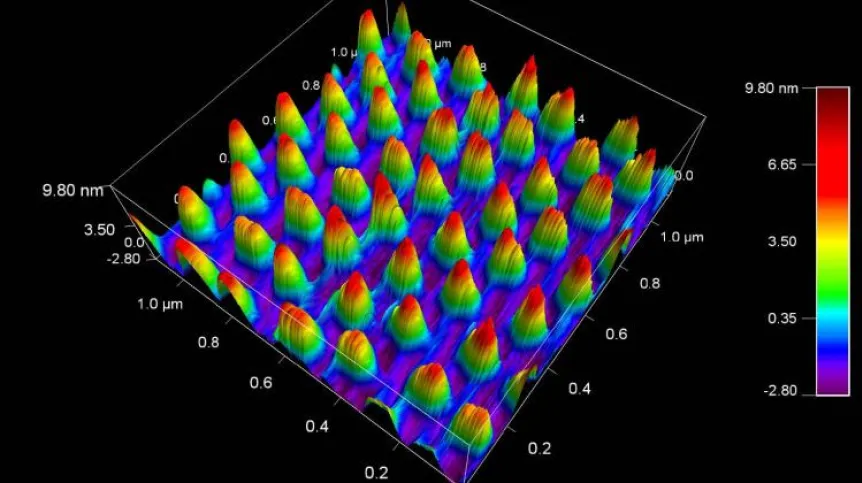
Although they are already used in modern photonic products on the market, metamaterials are still a huge area for research and scientific discovery. The most interesting applications of metamaterials are lenses free of typical defects (aberrations), anti-radar coatings and miniature antennas. The Military University of Technology is among centres that are developing methods for obtaining artificially created metamaterial structures.
Metamaterials do not occur in nature. They are built on the basis of artificial atoms, i.e. periodically distributed unit cells. The size of such a unit cell is several times smaller than the wavelength, yet the entire structure interacts with the wave.
GRAPHENE-BASED MICROCAVITY
The concept of tunable resonance microcavity based on graphene is yet another attempt to create metamaterials that in the future can be used in multifunctional photonic devices, such as infrared cameras or military optical sights.
Dr. Michał Dudek, Dr. Rafał Kowerdziej and Alessandro Pianelli from the group of Professor Janusz Parka at the Institute of Technical Physics presented their proposal for the so-called hyperbolic microcavities in Scientific Reports. The paper 'Graphene-based tunable hyperbolic microcavity' was published on January 8, 2021.
The scientists built a tunable resonance microcavity based on hyperbolic metamaterials. These structures consist of alternating layers of conductor and dielectric. The conductor here is graphene, and the dielectric is silica. Computer simulations have shown that both the modulation of the thickness of the silica layers and the change in the voltage applied to the graphene layers affect the tunability of the transmission and reflection properties of the obtained microcavity. The resonance cavity can amplify and modulate the radiation at the same time.
In addition to theoretical analysis, the researchers also proposed to create real photonic structures. If these structures are adapted to the possibilities of industrial production, it will be possible to produce, for example, tunable filters for infrared and visible light. Such filters eliminate unwanted wavelengths from the radiation beam, while letting all others pass through. Their use will improve the functionality of devices such as infrared cameras, optical rangefinders, contamination detectors.
The researchers said: “The structures we have described can be used in active and multifunctional photonic devices as tunable filters, modulators, in the construction of lasers, or in applications where high speed of operation is required, for example in modern telecommunications systems, including those essential for the needs of the military.”
METADEVICES BASED ON LIQUID CRYSTALS
Research on metamaterials has been carried out for a decade at the Department of Crystal Physics and Technology’s Faculty of New Technologies and Chemistry of the Military University of Technology. In an earlier publication in the same journal, physicists described a tunable metamaterial visible light modulator. It is a hybrid device built based on a nano-structured metasurface and dual frequency liquid crystal. The authors of the study are Dr. Rafał Kowerdziej, Professor Jerzy Wróbel and Professor Przemysław Kula.
Thanks to the use of a dual frequency liquid crystal, the metamaterial modulator allows to quickly (in less than 1 millisecond) tune and control the amplitude and phase of the transmitted radiation. In addition, it can act as an effective conductor or insulator for certain wavelengths and corresponding electrical voltages.
In the near future, such devices may be used as signal detectors of noise radars and electromagnetic wave modulators for smart ammunition.
PAP - Science in Poland
kol/ agt/ kap/
tr. RL













